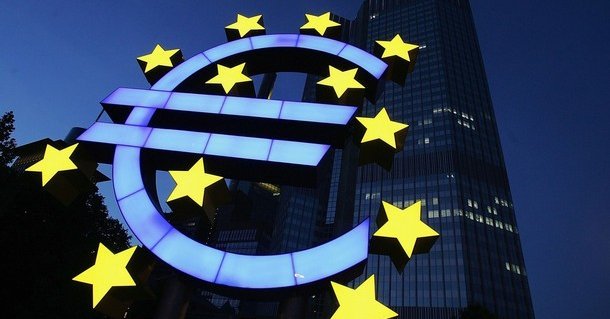When you push over a tilting doll, it temporarily loses its balance. But even though it starts to rock, it cannot fall over: its built-in weights give it a centre of gravity so low that it can right itself using its own gravity. This built-in weight thus works as an automatic stabilizer for the roly-poly toy.
There is an abundance of economic research on the question whether it is economically sensible to have a common currency, and if so, under what conditions. The main theoretical benefit of a common currency is that exchange costs do not longer apply, thus making business transactions easier to plan. The main disadvantage of a monetary union is its proneness to so-called “asymmetric shocks”.
Such shocks arise when some regions in a monetary union experience a crisis, while others continue to boom. There are a variety of reasons causing this phenomenon, such as the collapse of an industry located in a single country, or a political incident affecting one particular country more than others. The results are always devastating: the asymmetric shock causes capital to be moved out of the crisis region into the booming ones, which cannot be balanced out by the realignment of exchange rates. This creates a self-reinforcing cycle: the regions in crisis are pushed even deeper into recession, while the booming economies overheat and bubbles develop.
At the same time, in these situations, the monetary tools of the central bank fail. If it lowers interest rates, it fuels inflation in the booming regions; if it raises interest rates, it deepens the recession in the regions in crisis. If it tries to steer a middle course, it might harm both regions.
There is a lack of automatic stabilizers
Whether a monetary union can function thus depends on how well it can absorb asymmetric shocks. The crucial question is whether it has the tools to balance cyclical trends across different regions. Within a national state, the most important of these mechanisms are the common tax and social systems. When an asymmetric shock raises the unemployment in a region in crisis, the people there pay less income tax while at the same time receiving more money through the social support system. Conversely, the booming regions with high employment rates have higher tax revenues and lower social expenditure. The common budget enables a financial transfer from the booming regions to the ones in crisis. This transfer fuels growth in the regions in crisis and at the same time inhibits the development of investment bubbles in the booming regions.
In the end the transfers in the social and tax system thus work like a counterweight for the roly-poly toy: If a shock causes the economy to totter, they act as a counterweight , which balances the cyclical development. The main advantage is that they come into action reliably due to rules established in advance and without the necessity for further political decisions. Economists thus refer to taxes and social expenditures as automatic stabilizers.
On the European level there is a lack of such automatic stabilizers: the EU budget is too small and its transfer mechanisms (such as the structural and regional funds) are too rigid to enable a short term adjustment of different cyclical developments. Not surprisingly, the European monetary union has shown itself to be especially prone to asymmetric shocks: at the beginning of the 2000s, Germany was in an economic downturn, while the booming southern European states developed large property bubbles. In turn, the Euro crisis massively affected the economic downturn in the Mediterranean countries, while the northern countries are hardly affected. Regardless of what exactly caused these recessions, they were all deepened by the lack of automatic stabilizers in the Eurozone, which caused opposite developments to reinforce themselves. At the same time, the development of bubbles in the booming regions laid the ground for the next asymmetric crisis.
A European Unemployment Insurance balances asymmetric shocks
A solution to this problem is the European Unemployment Insurance. It could be funded through non-wage labour costs and could partially replace the already existing national systems for short-term unemployment. One possible implementation would be to have all employees contribute 2 per cent of their salary towards a European insurance which, in the case of unemployment, would then pay 50 per cent of their last salary for up to 12 months. It would be up to the member states and their national insurance systems to provide further benefits thereafter.
For the unemployed there would not be much of a change through this measure: in almost all EU countries the support payments provided by the national insurance systems are already higher than the ones the European Unemployment Insurance would provide. But the effects on the economic cycle in the Euro zone would be vast; just as it is already happening in the national social systems today, there would be an EU-wide automatic transfer from regions with high employment to regions suffering from high unemployment. In the event of an asymmetric shock the European Unemployment Insurance would prop up demand in the regions in crisis, prevent the development of bubbles in the booming regions and overall limit severe economic crises. At the same time, it would also make it easier to fight these.
Limiting the provision of unemployment support to 12 months would ensure that the European Unemployment Insurance only funds short-term unemployment caused by the economic cycle. These automatic transfers would thus not lead to a permanent financial redistribution among the member states. Through a whole economic cycle, the fiscal net balance would thus be almost evened out. In the event of a crisis, the economically best-performing states would profit from the support of the European Unemployment Insurance to the same extent as they contribute in times of economic boom – the stabilisation of the monetary union would thus come at almost no cost.
Today’s Eurozone resembles a roly-poly toy whose static balance was wrongly calculated in the production process. If nobody bumps into it, it looks pretty, but every crisis threatens to cause it to fall and in the worst case even to fall apart entirely. To maintain balance in the future, the monetary union needs automatic stabilizers. In light of this, the federal committee of the German Young European Federalists has declared its support for the establishment of a European Unemployment Insurance.


Follow the comments: |
|
